- Administrator
- Albums and Singles
![]()
As one of many of Dominick Fernow's many aliases, the debut of Vatican Shadow in 2010 could have ended up another one-off project to never be heard from again. However, going in a rhythmic direction rather than just harsh noise made for a project that stood out among its peers. Here, the second release and first full length is re-released on vinyl with a significant leap in sound quality.
The rhythmic direction that Prurient went in on Bermuda Drain and Time's Arrow was attributed by a lot of people to Fernow's membership in Cold Cave, but those seeds were sown back on the first VS release, Byzantine Private CIA (which is also slated for a vinyl reissue in the near future).Kneel Before Religious Icons is the first actual album, and like many Hospital releases, it was released in confounding format (four C10 tapes) and in an absurdly limited 33 copies, keeping out of reach of everyone except label obsessives and those who troll less than legitimate blog sites.
With a greater recognition from the less limited VS releases from late last year, as well as the parallels with recent Prurient, the project has received greater attention, and deservedly so.Here on vinyl for the first time, the sound is great, a lot more so than the original tapes, and also the music simply benefits from the warm, crackling ambience of vinyl.
From the Middle Eastern imagery and looped, rhythmic structures, Vatican Shadow has been frequently criticized as ripping off Muslimgauze, and while there are definitely similarities, the two projects are rather different from each other.VS has far more in common with the second generation of electronic industrial music (when it became danceable) than Bryn Jones' lo-fi endeavors.
"Chopper Crash Marines' Names Released" and "God's Representative on Earth" are both based on repetitive, metallic drum loops and pensive synth strings buried in the mix, balancing the melody with the clanking percussion and crunchy distortion.It's on tracks like "Harbingers of Things to Come" that the actual parallels to Muslimgauze appear, with Middle Eastern tinged FM synths and crackling rhythms.
On "Shooter in the Same Uniform as the Soldiers" and "Church of All Images," the beats are much more danceable, exemplified by the booming bass on the former and more diverse loop juggling on the latter, keeping both fresh and compelling.The more sparse and erratic structure and loping beats on "Final Victory:Christ Became a Man and had Truly Assumed Human Nature" hint at the direction the project has gone in more recently, focusing less on repetition and more on structural variation.
Being that they're all made up of repeating loops, the eight tracks that album are pretty repetitive, with most songs abruptly starting and stopping seemingly at random.It definitely conveys a specific mood, one of tension and conspiracy that would work well as film or TV backing tracks, but strong enough to stand on their own.With its similarity between tracks and repetitive nature, this is just the right length work to keep things fresh, and the mastering for vinyl is a dramatic step up from the original tapes.Of all of Fernow's projects, this one has been the most captivating since I first heard it, so I’m eager to hear what new work this wider exposure may lead to.
samples:
 
Read More
- Administrator
- Albums and Singles
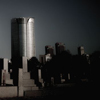 As much as I enjoy all of the musicians involved, the recently reincarnated Fenn O'Berg has thus far failed to recapture the deranged magic of their early years for me.  They can still be quite good though (and occasionally surprising).  These recordings from their 2010 Japanese tour share some of the muted, brooding tone of 2010's In Stereo, but also demonstrate that this laptop trio has not entirely abandoned their more wild, spontaneous, and absurdist tendencies.  I'm not sure if that necessarily makes In Hell stronger than its predecessor, but it at least seems a bit more striking and memorable.
As much as I enjoy all of the musicians involved, the recently reincarnated Fenn O'Berg has thus far failed to recapture the deranged magic of their early years for me.  They can still be quite good though (and occasionally surprising).  These recordings from their 2010 Japanese tour share some of the muted, brooding tone of 2010's In Stereo, but also demonstrate that this laptop trio has not entirely abandoned their more wild, spontaneous, and absurdist tendencies.  I'm not sure if that necessarily makes In Hell stronger than its predecessor, but it at least seems a bit more striking and memorable.
In Hell reminds me of the folksy, hackneyed joke "if you don't like the weather in _____, wait five minutes!" due to its unstable, constantly shifting nature.  Despite that endless flux, however, these five pieces evoke an omnipresent mood of uneasiness, coldness, and dislocation that make the album title seem like an extraordinarily apt one.  In fact, one the closest stylistic reference points for Fenn O'Berg at this point seems to be the 20th century classical music avant-garde, as several passages sound queasily and dissonantly Morton Feldman-esque and disruptions by musique concrète-style found sounds are rampant.  Or maybe it just sounds like The Caretaker fed into a malfunctioning blender that turns itself off and on at its own whim.  There are certainly some flashes of humor hidden amidst all the alienation, like the funky and cartoonish vamp at the end of "Vampires of Hondori," but the gravity and dark tone of the surrounding material imbues them with perverse seriousness.
In any case, this album is essentially a simmering stew of minimal and disquieting musical passages constantly being augmented, consumed, or derailed by a host of buzzes, squelches, whines, crackles, bleeps, bloops, crunches, hums, and violent processing changes.  The two shorter pieces ("Omuta Elegy" and "Concrete Onions") seem to somehow maintain a linear arc of sorts, but the lengthier ones tend to end up in a very different place than they started.  The aforementioned "Vampires," for example, veers into space-y synthesizer ambiance, goofy funk, something that sounds like being enveloped by a swarm of digitized birds, an approximation of a lonely violist playing an out-of-tune instrument in hell, and something that sounds like the very fabric of the universe being ripped apart over the course of its 18-minute duration.  There's even some classic rock buried in there too.
For me, Fenn O'Berg's zenith will always be 1999's "Fenn O'Berg Theme," which perfectly blended a smokey, noirish motif with digitized, laptop chaos.  My main issue with the recently reanimated Fenn O'Berg is the absence of any similarly strong themes.  They seem to be "composing" by bouncing ideas off of each other until something coheres rather than gleefully mangling a strong, pre-existing motif.  As a result, their recent work seems to be more sophisticated, uncompromising, and daringly improvised, but the trade-off is that the relative hooklessness and amorphousness make it a less accessible and increasingly self-indulgent affair.  In fact, it's kind of analogous to shifting from bebop to free jazz: there is no decline in inspiration or vision, but it is quite a bit harder on the ears.  Consequently, their appeal for me these days is largely a cerebral one–I am fascinated by how these three unpredictable artists interact with one another and deal with amusing curveballs (like the abrupt appearance of Boston's "More Than a Feeling" in "Christian Rocks"), but I definitely wish there was sturdier structure and melodic content holding it all together.
Samples:
 
Read More
- Administrator
- Albums and Singles
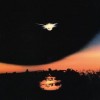 Start to finish, Mirrorring's debut is submerged in a hazy, blurred production aesthetic. This is not only unsurprising, it's exactly what I would have predicted from this collaboration between Liz Harris (of Grouper) and Jesy Fortino (of Tiny Vipers) before hearing a single reverbed note. Fortunately, Liz Harris' age-old trick is a good one, and Fortino's contributions are key, making Foreign Body more than the sum of its contributors' parts.
Start to finish, Mirrorring's debut is submerged in a hazy, blurred production aesthetic. This is not only unsurprising, it's exactly what I would have predicted from this collaboration between Liz Harris (of Grouper) and Jesy Fortino (of Tiny Vipers) before hearing a single reverbed note. Fortunately, Liz Harris' age-old trick is a good one, and Fortino's contributions are key, making Foreign Body more than the sum of its contributors' parts.
Opening track "Fell Sound" takes an immediate swan-dive into murky, immersive drone textures that are recognizable as Liz Harris' work to anyone lucky enough to snag vinyl-only pressings of last year's mighty A I A: Dream Loss and Alien Observer records. As on each of Grouper's records, the reverbed-to-high-heavens production is as much an intended focal point as Harris' cloudy vocals and muffled guitar strumming. What keeps "Fell Sound" (and the whole album, really) from seeming like A I A leftovers is the collaborative element shining through: Jesy Fortino's guitar counterpoint cuts through the fog like the distant headlights of an oncoming car. The song is quite evocative and pretty, if a predictable way to kick things off.
As the album progresses, Fortino's contributions come to light in her singing, which is warmer and more welcoming (and intelligible) than Harris' ghostly shards of voice. "Cliff" and "Mine" both layer Fortino's voice on top of a thick blanket of sound, with Harris' guitar playing smeared and blurred unto infinity, as if beamed in from oceanic depths under cover of night. As an aesthetic foil, Fortino solemnly finger-picks her acoustic guitar, letting small clusters of notes waft from the immersive drone. It's gorgeous stuff, to be sure, and sounds best played at high volume or on headphones, when the sounds are able to wash over my ears like a rising tide. As background music, it warms up a room admirably, with nothing abrasive or unexpected cutting through and spoiling the mood.
Room for improvement lies in the fact that both of these ladies know how to write a killer tune, and Foreign Body could use a couple more songs as opposed to sounds. Fortino's made a career out of melancholy vocal-and-guitar solo work on her two Sub Pop albums, and Harris' lovely song-cycle on Dragging a Dead Deer up a Hill shows that she can write memorable songs when she puts her mind to it ("Heavy Water/I'd Rather Be Sleeping"), as opposed to focusing strictly on atmosphere. Bits of Fortino's songwriting prowess sneak into Mirrorring tracks like "Silent from Above," which pairs the album's most evocative melody with Harris' soft backing vocals and a barely-there drone that evokes Grouper's most restrained work. "Silent from Above" stands as Foreign Body's best song, and the one melody I can clearly recall (i.e., hum to myself) after spending a couple weeks with the album.
Foreign Body was put to tape during a recording session in Portland, Oregon. It sounds cozy and personal, and it's obvious Fortino and Harris were in the same room together, feeding off each other's energy (and/or melancholy) in real time, as opposed to swapping MP3 files. Much of the album also sounds improvised, like Harris kicked off each piece by building guitar loops into a layered drone (as anyone who has seen her play live can attest) and providing space for Fortino to weave in acoustic guitar lines accordingly. In a brief interview last month, Fortino talked about her experience making the album: "We recorded most of the songs together live. [...] Most records I've done on my own are very straightforward, just a room mic and me singing and playing acoustic. So it was fun trying to go with Liz in an abstract direction."
In that same interview, Harris added color on the creative process and the pair's aesthetic differences: "We end up balancing each other out because of the way we're bringing this resonance out in our tones or sounds. She has a stronger voice than I do, and plays a brighter acoustic guitar, and picks out points rather than making washes of sounds. I tend to stay quieter and make these more blanket-y, low-end things." She's right, and as a midway point between Harris and Fortino's distinct, previously defined sounds, Foreign Body is a success. Most of what it leaves to be desired as a song cycle, it makes up on the strength of its immersive palette of sounds, as well as its merging of two visions into a cohesive whole.
Samples:
Read More
- Administrator
- Albums and Singles
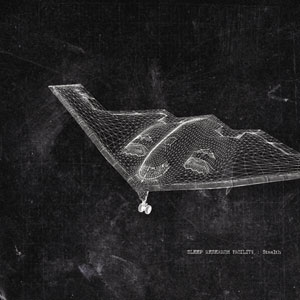
Artist: Sleep Research Facility
Title: Stealth
Catalogue No: CSR159CD
Barcode: 8 2356650762 8
Format: 2 x CD in jewelcase
Genre: Drone / Dark Ambient
Shipping: 9th April
Pre-Order CD
Sublime new album from the drone / dark ambient legend.
As a project commissioned for Cold Spring, "Stealth" presents itself as an exploration of sounds neither here nor there, textures camouflaged against their own background noise, and the distant crackling telemetric code-speak of a vague humanity hidden behind a cloak of deadly high-technology. Comprising of five deeply-layered extended tracks, mixed and edited from re-sampled location recordings originally captured inside the hanger environs of a Northrop-Grumman B-2 Stealth Bomber, during a period of downtime maintenance at a U.S. Air Force base in Cambridgeshire, England. Original field recordings and texture preparations by FOURM/Si_Comm.
First edition pressing of 1000 copies includes bonus disc comprised of this *pre-mix* material in its original, un-edited form, as a representation of the source audio from which "Stealth" was reconstituted.
Deep listening inspired by one of the most mysterious aircraft of the twentieth-century. Headphones recommended.
Tracks:
Disc 1: 1. Stealth1 | 2. Stealth2 | 3. Stealth3 | 4. Stealth4 | 5. Stealth5
Disc 2: Source
Read More
- Administrator
- Albums and Singles

Artist: Burial Hex
Title: Book Of Delusions
Catalogue No: CSR166CD
Barcode: 8 23566507529
Format: CD in jewelcase
Genre: Horror Electronics / Ritual / Post-Industrial
Shipping: 9th April
Pre-Order CD
During the period in which Clay Ruby first began working on this piece of art, he had become so completely surrounded by evil and deception that he was forced to begin summoning a particularly extreme and ancient force of protection and vitality just to make it alive through the end of 2008. Aside from spiritually fortifying Ruby's life, the complexities of these new elemental entities brought with them circumstances causing a much more rich and intense recording experience than he could have ever composed on his own. Classic horror electronics and post-industrial apocalyptic soundscapes with unsettling notes, anguished cries and voices of the dead. His most ritualistic album yet.
Reissue of the extremely limited LP with bonus tracks taken from the split LPs with Kinit Her and Zola Jesus, all available on CD for the first time! All tracks have been carefully remastered.
Tracks: 1. Final Litany | 2. Urlicht | 3. Crowned & Conquering Child | 4. The Book Of Delusions | 5. God Of War And Battle | 6. Storm Clouds | 7. Go Crystal Tears | 8. Temple Of The Flood
Read More
- Administrator
- Albums and Singles
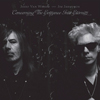 I am not at all surprised that Jim Jarmusch has finally made an album, but given his past links to folks like RZA,  Mulatu Astatke, and Tom Waits, I did not exactly expect his musical debut to be a duet with a Dutch lutenist.  As it turns out, however, Jozef van Wissem turns out to be a very comfortable and effective foil for Jarmusch's rather abstract guitar work.  While this isn't a deep or substantial album by any means (despite the grandiose implications of the Swedenborgian title), it is nevertheless quite a warm and likable one and it never sounds at all tossed-off or overwrought.
I am not at all surprised that Jim Jarmusch has finally made an album, but given his past links to folks like RZA,  Mulatu Astatke, and Tom Waits, I did not exactly expect his musical debut to be a duet with a Dutch lutenist.  As it turns out, however, Jozef van Wissem turns out to be a very comfortable and effective foil for Jarmusch's rather abstract guitar work.  While this isn't a deep or substantial album by any means (despite the grandiose implications of the Swedenborgian title), it is nevertheless quite a warm and likable one and it never sounds at all tossed-off or overwrought.
This is not the first time that Jarmusch and van Wissem have worked together, as Jarmusch contributed guitar to last year's The Joy That Never Ends.  That, of course, goes a long way towards explaining why this duo seem so at ease interacting with each other musically.  That also goes a long way towards explaining the basic stylistic thrust of this effort: it basically sounds like a Jozef van Wissem album, but slower and more spacious.  Josef's simple, ringing melodies are generally what hold the songs together and give them direction, but he leaves lots of room for Jarmusch to provide depth and color.  There are some exceptions, however.  The big one is the 9-minute "The Sun of the Natural World is Pure Fire," as van Wissem keeps his contribution fairly minimal to allow Jim's roiling, snarling howls of feedback and dissonant bent notes to take center stage.  To his credit, Jarmusch has no trouble making that work, unleashing a controlled cacophony that would not sound at all out of place at a Spiritualized concert.  Jim returns the favor for "He is Hanging by his Shiny Arms," allowing van Wissem to unfold a very pleasant and trill-heavy melody on his own, stepping in only near the end to cryptically recite several lines from a poem by St. John of the Cross.
As skilled as Jarmusch is at harnessing and sculpting distortion and feedback, the success is still largely dependent on the strength of van Wissem's framework.  Aside from the aforementioned "Shiny Arms," the best piece is probably the title one, as Jozef does a beautiful job dynamically switching back and forth between simplicity and rich harmony throughout.  There aren't any particularly weak compositions among these five pieces though, as even the more dirge-like ones ultimately catch fire or offer some sort of subtle delight.  The album's sole flaw seems to be that some of the songs tend to explore just one motif for a while, then just kind of abruptly end.  That certainly betrays vamp/improvisational origins, but the  pieces rarely overstay their welcome and the spontaneous/organic feel of the interactions make that seem like a pretty favorable trade-off.  I'm not even tempted to balk at the numerous allusions to Christian mysticism that would normally seem hugely out of place for such an intimate, loose, and unpretentious affair.  Perhaps I am just predisposed to like these two, but the themed and evocative titles seem to actually elevate this pleasant song suite into something that feels more meaningful and enticingly mysterious than it otherwise would have.
Samples:
- Concerning the Entrance into Eternity
- The Sun of the Natural World is Pure Fire
- He is Hanging by His Shiny Arms, His Heart an Open Wound with Love
 
 
 
Read More
- Administrator
- Albums and Singles
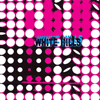 This album is hailed as boasting the most energetic and concise songs of White Hills' career, which seems like a very ill-advised direction for the band to take, given that they are not a band known for great songcraft.  I look to them solely for drugged-out, guitar-worship excess—trying to be direct and hard-hitting does not suit them at all.  Fortunately, they still balance their punchier songs with several prolonged, space-y freakouts.  When those avoid sinking into self-parodying extremes, they can be absolutely brilliant.  I just wish that there were fewer uneven, underwhelming, and frustrating moments between them.
This album is hailed as boasting the most energetic and concise songs of White Hills' career, which seems like a very ill-advised direction for the band to take, given that they are not a band known for great songcraft.  I look to them solely for drugged-out, guitar-worship excess—trying to be direct and hard-hitting does not suit them at all.  Fortunately, they still balance their punchier songs with several prolonged, space-y freakouts.  When those avoid sinking into self-parodying extremes, they can be absolutely brilliant.  I just wish that there were fewer uneven, underwhelming, and frustrating moments between them.
The album kicks off with one of the aforementioned short, hard-hitting songs, "Pads of Light."  Notably, I almost put the word "songs" in ironic quotes in this case, because this particular piece is extremely illustrative of why that direction is such a very bad idea.  Stylistically, "Pads" recalls Hawkwind's more metal leanings, but there is almost zero content: bassist Ego Sensation and drummer Nick Name whip up some rumbling, visceral power, but the song is essentially just Dave W. raspily howling "(something unintelligible)...on pads of light!" over some very dull and grindingly repetitive power chords.  Near the end, Dave thankfully erupts into a pretty cool guitar solo, but the rest of the song is just basically a wait for that to happen.  The whole thing sounds like it could have easily been made up on the spot.  "You Dream You See" later follows a similar template, but does so much more successfully, locking into a snarl-heavy, head-bobbing groove and culminating in a pretty unhinged guitar and synth freak-out.
Unfortunately, the album hits another spectacular low point in the opposite direction with "Song of Everything."  I want to scream every time I hear it, as it comes so close to being an absolutely classic White Hills song: it has a heavy riff, a propulsive groove, wild drumming, some neat psychedelic textures and flourishes, a lengthy wah-wah and spoken word interlude–pretty much everything I could possibly hope for.  Unfortunately, it also has some of the worst, most cliched lyrics in recent memory.  Initially, it seemed like the repeated howled "spread your wings and fly!" part was as bad as it could get, but then the languid and echo-heavy midsection sounded exactly like being trapped at a party by a college freshman that has just discovered acid ("open your miiiind!").  Once Dave dropped that philosophy on me, it became impossible to take the song at all seriously, no matter how fiercely they roared back.
Thankfully, the rest of the album mostly manages to avoid the dual pitfalls of attempted songcraft and overly earnest lysergic exhortations to free my mind and surrender to the cosmos.  White Hills are at their best when Dave just lets his guitar do his communicating for him and doesn't worry about trying to craft any catchy hooks.  As a result, the two lengthiest and most structurally simplistic pieces ("Robot Stomp"
and "I Write A Thousand Letters") are probably the best.  "Letters" is the sort of piece that probably shouldn't work at all, as the whole thing basically sounds a 14-minute-long outro with no substantial development of any kind.  Rhythmically and melodically, it almost sounds like a locked groove, which unexpectedly turns out to be a mesmerizing enough foundation to suck me deeply into all the tripped-out synth noises and heavily processed guitar pyrotechnics that unfold throughout.  The 12-minute "Robot Stomp" is even better still, holding down a throbbing motorik groove beneath a hazy of strange sounds and chattering voices and allowing far more dynamic variation and passing dissonance. In fact, the longer it goes on the crazier and more far out it goes–it may be the best single piece that White Hills have ever recorded.
I think that the problem with White Hills might be that they don't realize quite what it is that they do brilliantly (muscular, deranged, long-form psychedelic instrumentals).  That seems to be the only explanation for why something as weird, wonderful, and chaotic as "Robot Stomp" could possibly wind up on the same album as the lead-footed, reheated Hawkwind of "Pads of Light."  The latter might be accessible enough to lure in some more fans, yet it seems so bland, heavy-handed, and regressive when contrasted with the album's highlights.  Frying on this Rock is not exactly a misstep, as Dave W. and company have eliminated some of the bloat that characterized H-p1 and unveiled a couple of pieces that show a dramatic, inspired evolution, but they continue to be a bit too schizophrenic, inconsistent, and prone to wince-inducing lyrics for me to fully embrace.
Samples:
 
 
 
Read More
- Administrator
- Albums and Singles
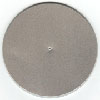 Tomkins is of course more well known for his power electronics work as Sutcliffe Jugend, he (as well as SJ partner Paul Taylor) have been using their own label, Between Silences, to release a multitude of experiments and improvisations. Here, Tomkins goes into a more experimental electronic direction, including seven full discs of material inspired by Japanese pachinko halls.
Tomkins is of course more well known for his power electronics work as Sutcliffe Jugend, he (as well as SJ partner Paul Taylor) have been using their own label, Between Silences, to release a multitude of experiments and improvisations. Here, Tomkins goes into a more experimental electronic direction, including seven full discs of material inspired by Japanese pachinko halls.
Like the 17 disc Weave (which was all autoharp-based material), Pachinko Noise is an obsessive exploration of a single topic.Inspired by the electronic and metallic chaos of pachinko halls during a 2011 visit to Japan, Tomkins used only a Korg Kaossilator to create the material spread across seven CDRs, each clocking in around 40 minutes.
There comes to be certain commonalities between pieces:tracks like "Pachinko Silverhalls" and "Pachinko Pachino," throw together stuttering outbursts and noise-laden blasts on top of a buried, but perceptible concession to melody, juxtaposing the noise and the music.On "Pachinko Rush," it goes even more into musical territory, vaguely mimicking techno, albeit in an apocalyptic manner.
In some cases, there may be little sense of melody, but a rhythmic undercurrent can still be heard.On pieces like "Pachinko Stretch," the rapid-fire percussive bits come together in a manner not all that dissimilar from latter day Autechre (think "Gantz Graf") but still retaining a unique feel."Pachinko Perversion" even goes farther, almost embracing late 1990s drum and bass.
Of course, it wouldn’t be a Tomkins release without pushing the noise envelope somewhat, and "Pachinko Duel" and "Pachinko Habitat" are great examples of this, coming out as pure, harsh electronic noise that is as violent as any Merzbow record."Pachinko Sound" is another chaotic piece, but with its hollow rattling and siren-like swells, it sounds like it could be a pachinko hall field recording.
Across seven discs, there is quite a lot to take in here, and I think if this were to be a more traditional, commercially based release, some editing and pairing down of the material would make for a stronger release.However, as a piece of intentional, obsessive sonic indulging, it definitely works.
samples:
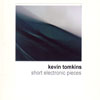
Short Electronic Pieces is drawn from a similar place sonically, but has a more distinct, varied sound to it, feeling more like a compilation of singular pieces rather than a complete album."Slyver" and "Light Funk", for example, are all microscopic digitally delayed notes that cross into the technoid-realms of Pachinko Noise.
However, the digital plucked strings and pitch-bent voices of "Walks" have a more significant musical sheen about it, making it stand out on its own."Quaid Series 1" just goes for it and brings a steady, metronomic rhythm, albeit hollow, into a skeletal techno track."Thiswas" cuts the beats back toclicks and pops, but remains in the realm of minimal electro.
Then again, there are the experimental, unstructured pieces like "Slointed" that have a wet, pulsing sound that feels more in-line with the earliest electronic music recordings."Vuldy Ewn" throws radio interference with Morse code like layers of sound, resulting in a piece that straddles ambience and noise.Finally, with the closing "Strins," Tomkins delivers pure, symphonic synth passages that feel like a powerful piece of film-score work.
For both of these releases, there is a sense of overkill, but never in a way that actually hurts them.I don't think that, even if paired down to shorter, more unified albums, they would really benefit significantly.I went into listening to both of these works expecting them to be sprawling, obsessive collections of material, and that’s exactly what I got.In both cases it can be a lot to take in during a single sitting, but given the right amount of time and space when listening, both come across quite well as captivating electronic works.
samples:
 
Read More
- Administrator
- Albums and Singles
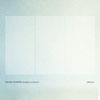 A posthumous release from this composer, with help from Will Guthrie (percussion) and Elisabeth Gmeiner (violin), there is a significant use of space and ambience from this otherwise noise-centric artist. With its unconventional instrumentation and coda/remix by Schäfer’s collaborator and friend Zbigniew Karkowski, it is a fitting tribute.
A posthumous release from this composer, with help from Will Guthrie (percussion) and Elisabeth Gmeiner (violin), there is a significant use of space and ambience from this otherwise noise-centric artist. With its unconventional instrumentation and coda/remix by Schäfer’s collaborator and friend Zbigniew Karkowski, it is a fitting tribute.
The main piece, "Thought Provoking III," is built from two rehearsal performances and the final, public performance, with all three seamlessly woven together to sound like a single uninterrupted work.Opening with subtle processing and scraped violin, it becomes more and more abrasive, as if the strings were being slowly scraped across broken glass and dull knives.Behind this there’s deep, resonating percussion that rumbles malignantly in the distance.
Amid these acidic scrapes and room-shaking pulses, organ pipes (played with hair dryers) resonate like foghorns, aggressively and dominantly atop everything else.With these three major elements, Schäfer weaves together a uniform composition, using subtle processing and effects to transform the various noises.
In the latter half of the piece, the violin is stretched to inhuman guttural screams, the percussion becomes a cacophony of jarring, erratic thuds and bangs to create an overwhelming, uncomfortable chaos that eventually relents, leaving tiny fragments of noise and bellowing pipes off in the distance.
The shorter second piece, a remix of the first by Zbigniew Karkowski, embraces the harsher, rawer elements and turns them up to 11.The percussion is melded into thin, brittle sounds that resemble an overamplifed sheet of tin foil in a tornado.Sounds are sped up, creating a tense, hyperactive feeling that overshadows the discomfort from the former piece, before finally ending everything on a pure white-noise blast.Easy listening it is not, but is a compelling abstraction of Schäfer’s work.
While Guthrie mentions in the liner notes that no one "did" much during these performances, but that the sound was allowed to flow naturally, I think that gives the wrong impression.Even if the results are more a matter of nature taking its course, the composition and structure established by Schäfer in preparation for this work is what causes the magic to happen.
samples:
 
Read More
- Administrator
- Albums and Singles
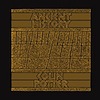 Collecting a number of cassette only releases from the '80s, this CD box set charts Colin Potter’s development over the course of about ten years. While the styles he employed are drastically different to his current mode of working, this collection covers everything from Kosmische soundscapes to quirky BBC Radiophonic Workshop style tunes. However, it is possible to hear the embryonic forms of what he is now doing; this may be ancient history but it is a narrative with some meaning today.
Collecting a number of cassette only releases from the '80s, this CD box set charts Colin Potter’s development over the course of about ten years. While the styles he employed are drastically different to his current mode of working, this collection covers everything from Kosmische soundscapes to quirky BBC Radiophonic Workshop style tunes. However, it is possible to hear the embryonic forms of what he is now doing; this may be ancient history but it is a narrative with some meaning today.
The first disc covers the A-Gain cassette where Potter is found traversing some of the same sort of sounds that Kraftwerk were doing not too long before him. However, this is music for cups of tea in the grey and green of northern England rather than themes for radioactivity and motorways. Potter ties his music to the landscape around him with pieces like "Rooftops" and "On Entering York Minster," evoking his hometown of York. The latter is a magisterial piece, deceptively simple but overwhelming in its overall effect (even if Potter laments in the liner notes that it does not do the cathedral it is named after justice). A bonus track is included in the form of "Forest of Galtres," another piece of music related to Potter’s surroundings at the time. Compared to the grandeur and brightness of the rest of this disc, "Forest of Galtres" is a dark, claustrophobic work.
My favorite material features on the second disc, originally released as Two Nights. This is the closest work to Potter’s later sound worlds: a pair of sprawling solo jams that constantly change and evolve as Potter introduces and removes various elements live in the studio. Both pieces were recorded on similar set ups one night after the other but despite a common ground between them, they expand out in vastly different directions. Supplementing the original Two Nights material is "One Million Blades of Grass," which follows a similar structure to the other two pieces and is just as engaging.
The third and fourth discs are given over to the two volumes of Recent History. These recordings are less thematically coherent than the first two discs in Ancient History but they represent a period of experimentation and exploration in Potter’s methodology. The best pieces are amongst the finest works in the box. "Nine Months" (dedicated to Potter’s daughters) is a tremendous piece, reminiscent of the type of works included on the first disc but here Potter sounds more confident and adventurous than he did on those earlier recordings. "Sunderland" brims with warmth, bringing to mind Cluster at their most tender moments.
The final disc (only available in the limited edition version) is a compilation of largely unreleased material and compilation tracks from the mid ‘80s through to the ‘90s. It is a bit of a mixed bag (some of the pieces are exercises with new equipment) but there are some gems here. "Drone for JC" (Jonathan Coleclough rather than the Messiah) is particularly effective, an intense wall of guitars and didgeridoo which ticks all the boxes for me. "Shark Music" finishes off the disc, leaving me with a sense of dread (the idea of sharks is usually enough to send a shiver down my spine…). Potter does something that John Williams could never do: create a suspenseful, apt piece of music without ripping off Stravinsky.
While this box set covers a huge amount of material, there are still a few of Colin Potter’s older releases that could do with reissuing. Some parts of the older cassettes are included in 2006’s vinyl only compilation A Skeleton/Cupboard Situation but it would be nice to see a companion CD set for Ancient History.
samples:
 
Read More
- Administrator
- Albums and Singles
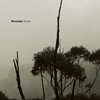 Robert Henke has long been an influential elder statesman in the worlds of electronic music and sound design (he's partially responsible for the ubiquity of MacBooks), but Ghosts seems to indicate that it is a role that he is not entirely comfortable with.  Much of the album is every bit as sparsely futuristic, cerebral, and ominous as I have grown to expect from Monolake, but there are also some uncharacteristically blunt nods to some of dance music's more aggressive strains.  The success of that aesthetic experiment is certainly questionable, but Henke has otherwise completed yet another minor masterpiece of razor-sharp focus and clarity.
Robert Henke has long been an influential elder statesman in the worlds of electronic music and sound design (he's partially responsible for the ubiquity of MacBooks), but Ghosts seems to indicate that it is a role that he is not entirely comfortable with.  Much of the album is every bit as sparsely futuristic, cerebral, and ominous as I have grown to expect from Monolake, but there are also some uncharacteristically blunt nods to some of dance music's more aggressive strains.  The success of that aesthetic experiment is certainly questionable, but Henke has otherwise completed yet another minor masterpiece of razor-sharp focus and clarity.
I have a very complicated relationship with electronic dance music's avant-garde, as it is responsible for so much fascinating and innovative music, but almost all of it is innately doomed to rapid obsolescence.  Each groundbreaking new release ultimately just winds up being inspiration for the next generation of groundbreaking new releases in an endless cycle.  Also, many contemporary dance artists embrace a quasi-inhuman sensibility that clashes strongly with my own aesthetic preferences.  Ghosts is very much an embodiment of that machine-music vision: it is not exactly an extreme album, but in typical Henke fashion, it largely eschews any traces of warmth, imperfection, soul, or melody.  In theory, such a willfully faceless and beat-driven aesthetic should make Monolake largely indistinguishable from many other current artists, yet that is not the case at all.  Henke is, quite simply, one of the finest and most exacting producers in the world and he has a very distinct vision.  It is often a stark and alienating vision, certainly, but it sometimes achieves a cold, crystalline beauty as well.
The most obviously striking elements of Ghosts are the incorporation of industrial and dubstep textures and tropes in a few songs, like the wobbly sub-bass and the recurring robot-voiced "you do not exist" in the title piece.  "Ghosts" isn't quite a total misfire, but it does sound instantly dated and it's bizarrely straightforward for Henke–it sounds like he is either trying to pay loving homage to early '90s Haujobb, awkwardly connect with youth culture, or audition for a first-person shooter videogame soundtrack.  That is unfortunate, as he is much more inventive and abstract elsewhere, but "Ghosts" assumes disproportionate importance by being the opening song (and for being the only song with an attempt at a hook).  For me, the truly compelling aspects of the album are what isn't there: while Ghosts is a very beat-driven album, the beats are essentially supporting little more than an array of processed non-musical sounds and a whole lot of uncluttered space.
It takes close scrutiny to appreciate the full magnitude of Henke's talents, as he is neither a brilliant beatsmith or composer, yet he seems to ingeniously find ways to make those skills seem irrelevant to his work.  Or maybe he consciously trying to move beyond such concerns–it's especially hard to say with his beats, as they aren't particularly dance-friendly, visionary, or overtly complex, but they are unpredictable, shifting, and vibrant enough to stay compelling anyway.  Robert is an amazing sound processor though and he has a pretty unerring ear for how to make something wonderful out of seemingly very simple and unpromising materials.  In fact, part of the fun with this album is trying to figure out what exactly I am hearing, as "Foreign Object" sounds like racquetball game and "Taku" mostly sounds like it could have originated from just a glass of water and a marble.  I also enjoy Henke's talents as a merciless sound sculptor, as there are few other people in music so intent on perfect, undiluted clarity.  The bulk of Ghosts is kind of a high-wire act in which all musical safety nets and ropes have been removed, leaving only the songs' essence in sharp focus.
As impressive an accomplishment as Henke's hyper-simplicity and crystalline futurism is, it makes Ghosts pretty hard to connect with on any sort of deep level and creates a definite void of sorts.  Robert generally does an amazing job distracting me from all that with his unusual textures and insistent, constantly evolving beats, but occasional glimpses of something less bleakly inhuman highlight the fact that a vacuum certainly does exist.  Even something like a woman's voice dispassionately reciting a list of numbers ("Hitting the Surface") is enough to make my ears perk up, given the alienating contrast of the surrounding sounds.  In fact, "Aligning the Daemon" is probably my favorite piece on the album simply because it briefly features an organ chord: that small splash of color and musicality has enormous impact after experiencing nearly an hour of music with neither.  I have no idea if that was entirely by design (perhaps Henke was only teasing to amuse himself), but I definitely would've liked this album far more than I did if there had been other fleeting flashes of life and color amidst the clinking and clanking mechanized ominousness (I am sure he wouldn't care though).  Nevertheless, Ghosts is still an excellent album, albeit more in the "musicians and music critics will find much to admire here" sense than in the traditional one.
Samples:
 
Read More


